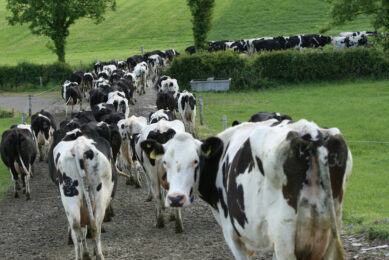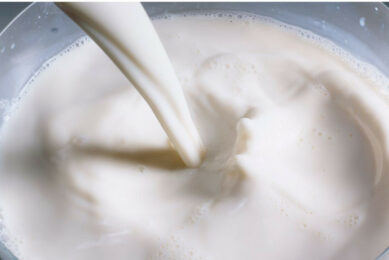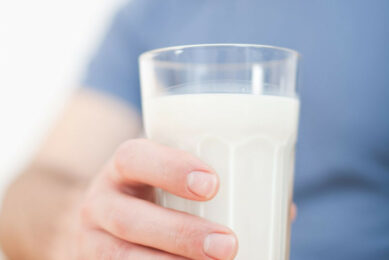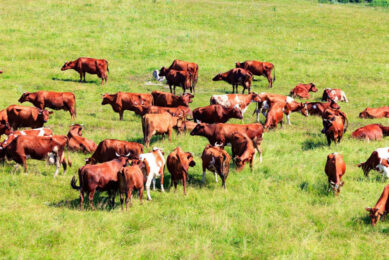Huge ambitions for Ireland’s dairy sector
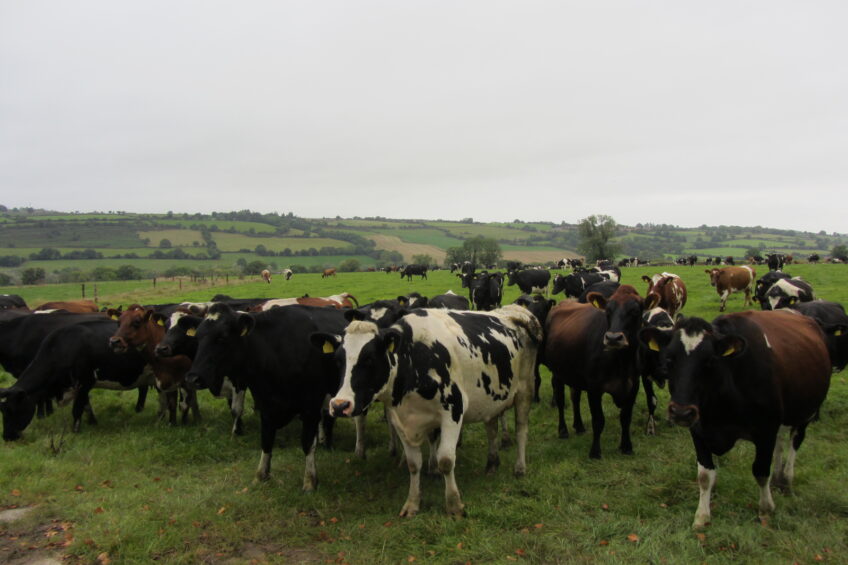
With a targeted 50% increase in production by 2020, the ambitions of the Irish ?dairy industry are huge. The grass-based system makes it possible to produce at a low cost and the government supports growth in the sector. On the other hand, a shortage of land and young farmers could derail the plans. Also, the sector will become more ?vulnerable when 100% of the extra milk goes to the world market.
Given the abolishment of the European quota system, several dairy producing countries are unfolding or have unfolded a strategy to become a strong player within the new reality in the global dairy industry. Ireland is one of those countries and aims to expand it’s production. Not just with small steps, but by increasing production with 50% by 2020 compared to the production in 2009.
An international group of farmers and people from the dairy industry visited the country just before the end of the quota system to see the developments for themselves. The experts came together under the flag of Global Dairy Farmers, formed by Dutch dairy expert Bram Prins, which connects progressive dairy farmers around the world. Global Dairy Farmers visit and organise international congresses, farm tours and study trips. This time a group of about 25 dairy farmers paid a visit to Ireland. What makes Ireland interesting? The country has huge growth ambitions in a non-typical European grass-based system combined with the effects of a quota-system that is coming to an end in 2015.
The Irish dairy’s enormous ambition differs a lot from the past situation. Since the introduction of the milk quota in the early 1980’s, the total milk yield decreased in the first years and then stabilised for many years. Because of the lack of possibilities to expand, more and more farmers started with beef cattle as a side business and later specialised the beef side of their operation. For years, beef production was reasonably profitable, but since the reforms of the European agricultural policy it became less lucrative compared to the production of milk.

Solid strategy development – 50% growth in diary production
An important blue print for the ambitions to expand the milk production is written in the so called ‘Food Harvest 2020’. The Irish Government has a solid strategy in place to further develop their main agricultural sectors. For dairy, this strategy paper is the roadmap for a 50% growth in production by 2020. Compared to many other European and third world countries, the dairy sector in Ireland has some clear advantages over competitors. Prins, who has discussed the situation in Ireland with a lot of experts on this subject: “The strategy paper alone is one of the most important advantages of the Irish dairy industry. So far this strategy has proven to be consequent.” The key players in the sector are taking their responsibility seriously and the government is making laws that enable farms to expand more easily. The milk factories are searching for markets to export the extra milk products. And the farmers are keeping extra heifers to enlarge the herds and educating themselves in getting higher yields from their cows and pastures. Prins: “Everyone is involved and committed, that is a unique situation.”
Another important reason why the dairy industry is able to grow, is cost price. The grass based system with simple housing makes it possible to produce milk at low costs. Prins estimates the cost price is between € 20 and € 25 per 100 kilo. The average milk price in 2013 was € 38.5 per 100 kilo milk. The grass based system is further optimised to serve this low cost price strategy, by pushing down on cost in the fields of feeding, breeding and management. “You can see the whole sector is cooperating on many levels. I think the cost price can drop even further.”
Lack of available land – the most restictive factor for Irish dairy
After studying the Irish industry closely, Prins estimates that 30% of the total growth ambition will be no problem. A part of that amount is already in production and there are no signs that further expansion up to 30% will be a problem. The next 20% is a story in itself.
The most important restrictive factor is the lack of available land. Ireland has a very low land mobility; it is imbedded in the Irish culture that a farmer doesn’t sell his land. Furthermore, the dairy farmers encounter fierce competition from beef farmers when entering the real estate market. A lot of land is held firmly by people who probably will not sign it away. “Ireland has a big group of beef farmers who are retired dairy farmers. They enjoy their low labour system and can afford to deal with the low prices for beef.” There is a chance to convert these farms back into dairy farms, but it will be a challenge. The lack of available land could make growth beyond management and efficiency improvements a challenge. “Growth also demands farmers to change their way of thinking in certain areas, and although we visited some very innovative farmers, we have our doubts about the changes an average farmer is prepared or able to make.”

With not enough land under the expansion strategy, dairy farmers must use other, probably more expensive products, to complete the feed ration. That means the cost price, one of the strong aspects of Irish dairy farming, will rise. “Dairy farmers can produce their own grass for €0.06 per kilo dry matter. Using concentrates will make the diets much more expensive.”
Another problem is the lack of young farmers and the level of management quality. For a long time, there has been very little interest in farming in general, and dairy farming in particular. Because of that, there is a gap in available young farmers in the age from 22 to 35 years. There are programmes in place, however, to raise interest among young people to work in the dairy sector and help them to take over the family farm. But still there is fear that the general level of dairy management will not match the high ambitions in increasing amounts and yields.
Creating new markets for Irish diary
The Irish dairy industry is specialised in the production of butter, under the name Kerry Gold. The brand is owned by the Irish Dairy Board. With success; The Irish Dairy Board was awarded Exporter of the Year by the Irish Exporters in 2010. Ireland has 14 processors of milk with four of them being large companies, like Dairygold and Glanbia.
The extra milk the Irish plan to produce, about three million tonnes compared to the production in 2013, must be exported to the world markets. The Irish market, and the EU, is already self-sufficient. Prins sees this as one of the weak links for Ireland in the years to come. “At the Irish Dairy Board we saw an inspiring example of adding value to dairy products. With creating new products for new markets, opportunities are created. But when demand does not keep up with production, milk prices will become more volatile and farmer incomes become more insecure.” When keeping in mind that cost price probably will stay at the same level or even increase, Prins sees a challenge in elevating the ceiling that global demand for high quality milk will create.

possible to produce milk at low costs.
The focus is now to expanded to other products, like milk concentrates. Therefore, there are several plans for building installations for drying milk. But also other products are important in the strategy. The Irish Dairy Board lately unfolded plans to double the export of butter and cheese to the United States. The Irish grass image is played out by the Irish marketers because in the US most cows are on diets with maize and grains and kept indoors year round.
Expand with 150 cows
The next years will prove whether or not the Irish dairy farmers can meet the high expectations. A part of the farmers want to grow fast, while others would prefer take a slower approach or just do nothing. In the town of Tallow, in the east of Ireland, Shane Maxwell milks about 800 cows on two locations. The proposed 50% increase in production is no problem at his farm as he is planning to expand his herd in 2015 with 150 cows and is already keeping more heifers. He wants to increase the production from his land and the 5,000 kilo production per cow. “I am following my own course. I think 400 to 500 cows per location is ideal for this type of farm.” With that size he can still produce milk efficiently and for a low cost.
Join 13,000+ subscribers
Subscribe to our newsletter to stay updated about all the need-to-know content in the dairy sector, two times a week.



